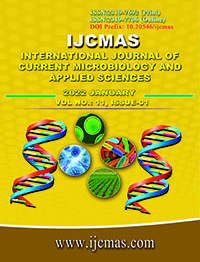


 National Academy of Agricultural Sciences (NAAS)
National Academy of Agricultural Sciences (NAAS)

|
PRINT ISSN : 2319-7692
Online ISSN : 2319-7706 Issues : 12 per year Publisher : Excellent Publishers Email : editorijcmas@gmail.com / submit@ijcmas.com Editor-in-chief: Dr.M.Prakash Index Copernicus ICV 2018: 95.39 NAAS RATING 2020: 5.38 |
In a long-term commercial pineapple farm (Ananas comosus cv MD-2) with more than 10 planting cycles, the root content and nematode population dynamics was determined on the crop. In the plant crop, 10 terraces with 16 beds were selected, each with plants of 2, 4, 6, 8 and 13 (at fruit harvest) months after planting for root sampling on both Inceptisol and Ultisol soils. In areas of first ratoon crop, 10 terraces also with 16 beds with 4 and 8 months after selection of the sucker and 10 terraces at fruit harvest, were sampled on both Inceptisol, and Ultisol soils. In each terrace, a composited root sample was taken from roots of 5 plants distributed diagonally along the terrace in beds:4, 6, 8, 10 and 12 (one plant per sampled bed). Plants were extracted in each of the 10 terraces and each growing age with a shovel, all the roots were cut off and collected, placed in identified plastic bags, and sent in coolers to the CORBANA nematology laboratory for nematode extraction. The results revealed an increase in root weight up to 180 (Inceptisol) and 120 (Ultisol) days after planting. Then there was a slight decrease that was aggravated at fruit harvest of the plant crop, which was extended until the first ratoon, with differences (P< 0.0001) between crop ages in both soils. The nematode frequency was 78% in the Inceptisol, and 96% in the Ultisol soil. In both soils, the predominant nematode was Pratylenchus spp. with more than 91% of the total nematode population, and the rest was Helicotylenchus. An increase in the population of Helicotylenchus spp. (P< 0.0001), Pratylenchus spp. (P< 0.0001) and total nematodes (P< 0.0001) was observed with the age of the crop until 8 months of sowing, in both soils. According to the nematode thresholds established for the crop, the populations found deserve control to prevent losses in production.
 |
 |
 |
 |
 |